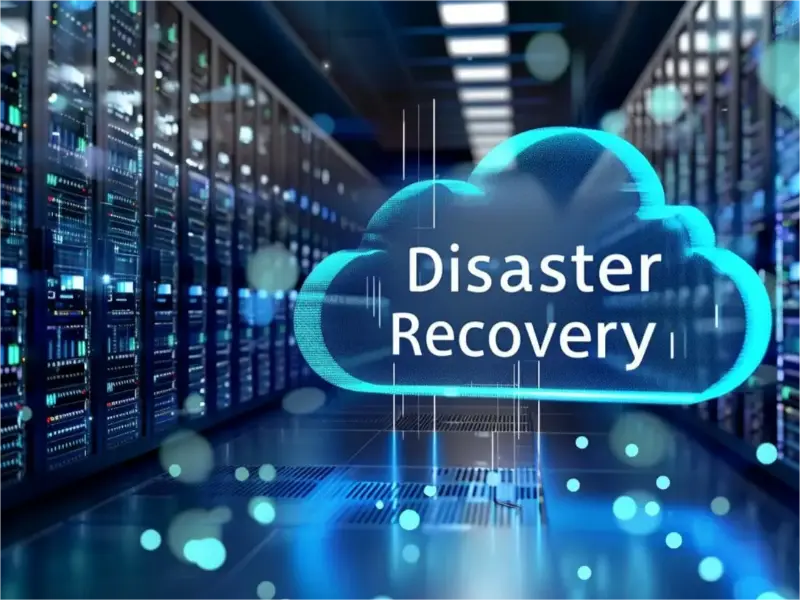- DRCs are facilities that help businesses continue operations by providing secure data storage, backup and remote access during disasters.
- DRCs are equipped with advanced technologies such as redundant power supplies and environmental controls that ensure the resilience and availability of critical business functions during disasters.
- The role of DRCs is not only to provide robust data protection and recovery, but also to ensure business continuity and data integrity.
Disaster Recovery Centres (DRCs) play a key role in ensuring business continuity in the event of unforeseen disruptions, such as natural disasters or cyber-attacks. These specialised facilities are designed to protect critical data and maintain essential operations, minimising downtime and potential financial loss.
As the reliance on digital infrastructure grows, the importance of robust disaster recovery strategies has become more pronounced. The industry is seeing a shift towards more sophisticated, technology-driven solutions, such as cloud-based and virtual DRCs, which offer greater flexibility and scalability. This evolution is expected to continue, with advances in technology continuing to shape the future landscape of disaster recovery.
Understanding disaster recovery centres
Disaster Recovery Centres(DRCs) are specialised facilities designed to ensure business continuity following disruptions such as natural disasters or cyber-attacks. They are an integral part of an organisation’s disaster recovery strategy, helping to minimise downtime and financial loss during emergencies by providing a reliable backup location to manage and quickly restore critical operations.
DRCs provide secure data storage to protect critical data from various threats, which is critical for data protection during disasters and rapid recovery after a disaster. They also support vital backup operations to replicate critical data, thereby ensuring its availability for business continuity. In addition, DRCs facilitate remote access to IT systems, which enables staff to maintain business operations from remote locations when access to the main office is disrupted.
Also read: Understanding cloud backup: How it functions and why it’s essential
Components of a disaster recovery centre
The DRC is equipped with a robust infrastructure designed to ensure resilience and high availability in the event of a disaster. This includes redundant power supplies to ensure uninterrupted power even in the event of localised power failures. Data communications links are also redundant to protect against connectivity issues. Environmental controls such as HVAC systems maintain optimal conditions for sensitive computing equipment, while stringent security measures protect against unauthorised access, both physical and digital.
The technology deployed within a DRC includes state-of-the-art computing platforms and telecommunications systems that are critical to running critical applications and efficiently managing data recovery. These systems are designed to quickly restore data and application availability, thus ensuring that key business functions can continue almost seamlessly.
Types of disaster recovery centres
Internal DRCs: Located within an organisation’s own premises, but separate from key operational areas to mitigate risk without relying on external entities.
External DRCs: Managed by third-party disaster recovery services, these facilities offer organisations the benefits of off-site data protection and recovery solutions without the need for internal management.
Virtual DRCs: Leveraging cloud-based technologies, virtual DRCs provide online backup and data recovery services that offer scalability and rapid deployment without the physical footprint of traditional centres.
Also read: What is hybrid cloud architecture?
Setting up a disaster recovery centre
Location considerations: When setting up a DRC, it is important to choose a location far enough away from the main site to avoid simultaneous impact from the same regional disasters, but close enough to ensure that staff can access the facility if required.
Scalability and flexibility: The design of a DRC must allow for future expansion and technological upgrades to ensure that the centre remains effective as business needs evolve and new technologies emerge.
Role of disaster recovery centres in business continuity
DRCs play a vital role in maintaining business continuity. They ensure that critical business operations can continue with minimal disruption, supporting ongoing business activities and customer service during disruptions. These centres are also critical to maintaining data integrity and security, by providing robust systems designed to protect, safeguard and quickly recover vital business data in the event of a disaster.
Challenges in managing disaster recovery centres
Cost implications: Establishing and maintaining a DRC requires a significant financial investment. The costs associated with building, equipping and operating a DRC can be substantial, especially when considering the advanced technologies and infrastructure required.
Complexity: Designing, implementing and maintaining a DRC requires specialised knowledge and skills. The complexity of managing these centres requires dedicated expertise in disaster recovery planning and response, as well as regular training for personnel involved in the operation of the DRC.

